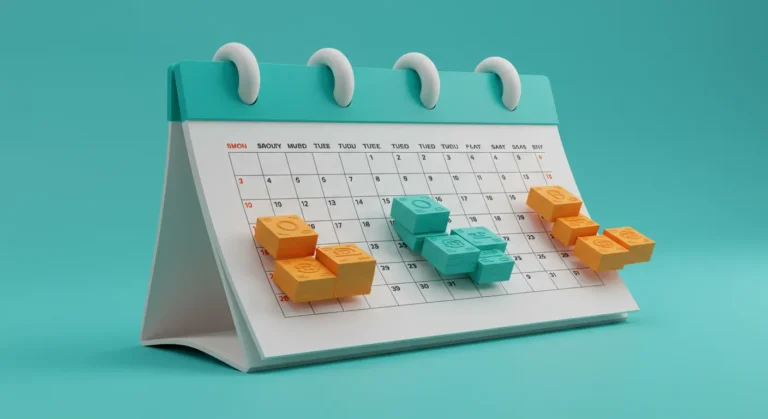What is the best way to budget monthly? It’s a question many of us face, and rather than a one-size-fits-all answer, the best budgeting method is often a personal journey toward financial clarity and freedom. Whether you have a steady paycheck or variable income, understanding your financial situation and goals is crucial. It’s not just about allocating funds; it’s about aligning your spending with your values and aspirations. So how do we go about it? Strap in, because we’re about to explore various strategies to create a monthly budget that suits your unique needs.
Imagine sitting down with your financial notebook, armed with a cup of coffee, ready to tackle the elusive beast that is budgeting. It’s not merely a chore; it’s an opportunity to assess where you are and where you want to be. Each month’s budget can act as a roadmap, guiding you financially without the stress of uncomfortable surprises. This roadmap isn’t just for adults living paycheck to paycheck; it can be just as valuable for a student managing their first credit card or a couple planning for a home.
I’ve seen countless stories of how effective budgeting can transform not just finances but even relationships. Money discussions can be a source of tension, but a solid budget can foster teamwork and unity in financial decisions. By engaging in the budgeting process together, we can create a shared vision of financial health that benefits everyone involved.
Ultimately, figuring out what budgeting method is best for you might take a little trial and error, but sticking with it can yield profound benefits. So, ready to demystify the budget? Let’s discover practical methodologies that can revolutionize the way you manage your monthly finances.
Understanding Your Financial Landscape
The first step in effective budgeting is knowing your financial landscape. You cannot chart a course unless you understand where you’re starting from. This means gathering all your financial statements, bills, and income sources. The clearer your picture, the better your navigation.
Income Identification
Begin by clearly marking your sources of income. This includes your salary, any side hustles, investments, or even allowances you might receive. Create a comprehensive list and tally it up to understand what you have each month.
Expense Tracking
The next component involves tracking your expenses. Break them down into fixed expenses (like rent or car payments) and variable expenses (like dining out and groceries). Many find it helpful to use budgeting apps or spreadsheets for this purpose. These tools can automate the tracking process and provide insights.
Choosing Your Budgeting Method
With a clear understanding of your income and expenses, it’s time to choose a budgeting method that resonates with you. Different strategies work for different people; what’s essential is finding one that you can stick to. Below are a few popular methods.
The 50/30/20 Rule
This method divides your after-tax income into three categories: 50% for needs, 30% for wants, and 20% for savings and debt repayment. It’s ideal for those who want a simple structure without getting too bogged down in the nitty-gritty.
The Zero-Based Budget
Here’s where you allocate every single dollar of your income to expenses, savings, and investments until your income minus your expenditures equals zero. This method is rigorous and can help you gain full control over your finances, ensuring that no dollar is unaccounted for.
Implementing Your Budget
Implementing your budget is where the fun (and challenge) begins. Putting your plan into action requires commitment and adaptability to changes. Life is unpredictable, and so might be your financial situation.
Setting Up Automatic Transfers
To maintain consistency, consider setting up automatic transfers for savings and bill payments. Automating your savings can simplify your financial life and help you avoid the temptation to spend money you should be saving.
Review and Adjust
Just like our lives, budgets are fluid. Allocate time at the end of each month to review your spending and see what worked and what didn’t. Adjust your budget as necessary, and pay attention to any patterns that might indicate shifts in your financial habits.
Handling Debt Wisely
Debt is a common aspect of financial life, and handling it wisely is crucial to budgeting. It’s essential to integrate debt repayment into your monthly budget in a way that feels manageable rather than overwhelming.
Prioritizing Debt Payments
Utilizing strategies like the avalanche method (paying off debts with the highest interest rates first) or the snowball method (paying off the smallest debts first for motivation) can create a sense of structure in your repayment efforts.
Seeking Financial Advice
If debts feel unmanageable, don’t hesitate to reach out for professional advice. Financial advisors can assist you in crafting a personalized debt management plan while integrating it smoothly into your budgeting overall.
Staying Motivated and Engaged
While budgeting is definitely an essential process, staying motivated can be a challenge. Keeping the energy alive requires a little creativity and engagement with your financial journey.
Setting Financial Goals
Set short-term goals like saving for a vacation or long-term ones like buying a house. These goals can act as markers for your budget, turning something mundane into a motivational journey that excites you.
Utilizing Gamification
You could even consider incorporating gamification into your budgeting process. Apps that provide challenges, rewards, or milestones can transform budgeting from a chore into an enjoyable game.
By understanding your financial landscape, selecting and implementing the right budgeting method, addressing debt wisely, and maintaining motivation, you can craft a monthly budget that not only meets your needs but propels you toward your life’s aspirations. Remember, budgeting is a journey, not a destination; every month brings new opportunities for learning and growth in our financial lives.

Useful links
Conclusion
Budgeting is more than just crunching numbers; it’s about envisioning your dreams and prioritizing what truly matters to you. You might feel intimidated at first, but remember, creating a monthly budget is your personal roadmap to financial freedom. By understanding your spending habits and tracking your income, you set the stage for a more fulfilling life where you can spend without guilt and save for future aspirations.
I often find myself at a coffee shop, jotting down my expenses while sipping a latte, and it’s become more enlightening than tedious. The sense of control you gain from having a structured budget is incredibly empowering. You can make informed choices that align with your goals and values. Plus, who wouldn’t want some financial peace in the chaos of life?
So, whether you’re saving for a vacation, paying off debt, or planning for retirement, the best budgeting strategy is one that resonates with your style and needs. Take it step by step, adjust as you go, and celebrate those milestones—big and small. We all deserve to feel confident in our finances, so why not start today?
Frequently Asked Questions
What is the first step to create a monthly budget?
The first step in crafting a monthly budget is to gather all your financial information. This includes your income sources (salary, side gigs) and fixed expenses (rent, utilities). Jot down variable expenses too, like groceries and entertainment. Once you have a complete picture, you can see where your money is going and identify areas for improvement. Visualization tools, such as spreadsheets or budgeting apps, can simplify this process and make it more engaging.
How do I account for irregular expenses in my budget?
Irregular expenses can catch us off guard if we’re not prepared. To budget for them, start by identifying common irregular costs—think car repairs or annual subscriptions. Estimate their total per year, then divide that amount by 12 to create a monthly savings goal. By factoring these into your monthly budget, you cushion the impact of unexpected costs and prevent any financial surprises down the line.
What budgeting method works best?
While there’s no one-size-fits-all approach to budgeting, popular methods include the 50/30/20 rule, zero-based budgeting, and the envelope system. The 50/30/20 rule allocates 50% of your income to needs, 30% to wants, and 20% to savings and debt repayment. Zero-based budgeting requires you to assign every dollar a job until your income minus expenses equals zero, providing a meticulous approach. Choose one that feels intuitive for you—it’s about what helps you stay engaged and committed to your goals.
How often should I review my budget?
It’s wise to check in on your budget at least once a month, but don’t hesitate to tweak it more frequently, especially if your financial situation changes. Life events like a new job, a move, or a major purchase can all warrant adjustments. Regular reviews will help ensure you are on track with your goals and will allow you to adapt your budget to reflect your current needs and lifestyle.
What if I have trouble sticking to my budget?
Sticking to a budget can be challenging, but remember that it’s a learning process. Start by setting realistic goals; overly ambitious plans can lead to frustration. If you stumble, analyze why it happened—were there unexpected expenses? Did impulse buys creep in? Identifying triggers means you can strategize solutions, like using cash only for discretionary spending. Remember, modifying your budget is perfectly acceptable; it’s all about making it work for you!
How can a budgeting app help me?
Budgeting apps are fantastic tools for staying organized and accountable. Many offer features like automatic expense tracking, budget categorization, and even goal-setting reminders. They make it easier to visualize your spending habits, analyze trends, and adjust your budget in real time. Popular options include Mint, YNAB, and PocketGuard, all designed to enhance your budgeting experience and keep you engaged on your financial journey.
Can budgeting help with saving for long-term goals?
Absolutely! A budget is instrumental in achieving long-term financial goals. By allocating a portion of your income toward savings each month, you build a future safety net. Whether saving for a home, a child’s education, or retirement, a clear budget helps you track your progress and prioritize these goals. Celebrate those small victories as you inch closer to your dream, making it all feel more attainable and fulfilling.


